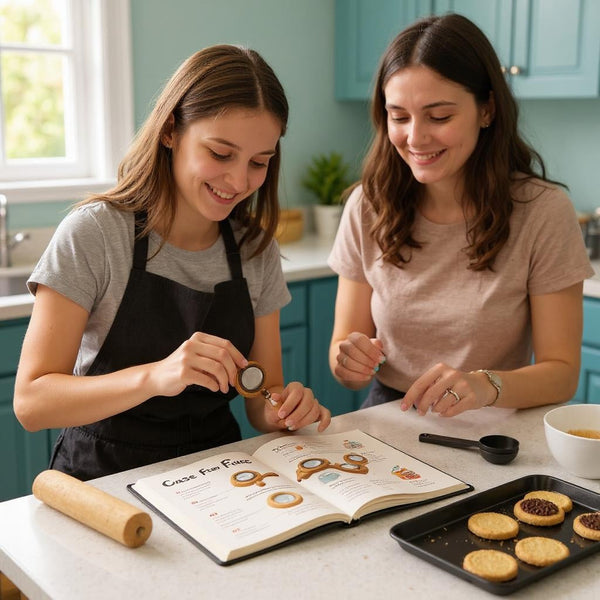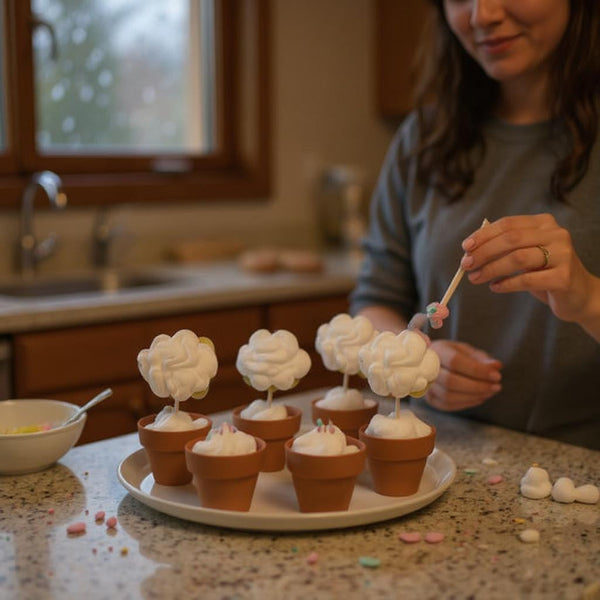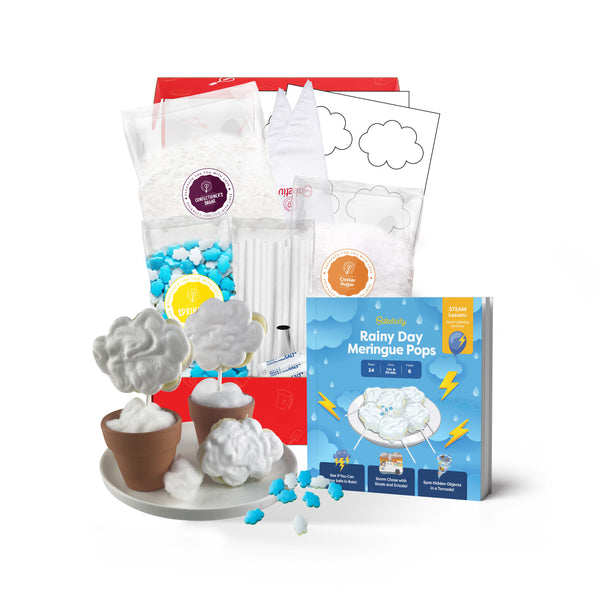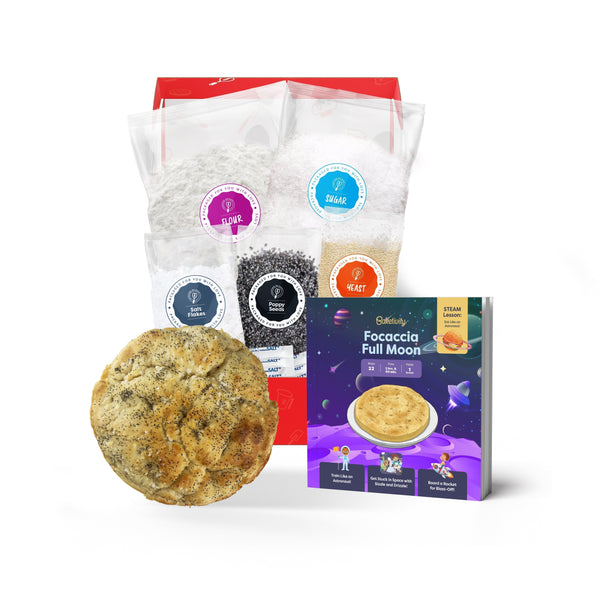Baking is not only a delicious way to satisfy your sweet tooth, but it can also be an excellent tool for homeschooling. By incorporating baking into your curriculum, you can unleash your child's creativity while teaching them important skills such as math, science, and problem-solving. In this article, we will explore the basics of baking, how to make it educational, fun baking projects for homeschoolers, tips for a successful homeschool baking experience, and how to evaluate your child's baking progress.
Understanding the Basics of Baking
The Science Behind Baking
Did you know that baking is essentially a scientific experiment? Understanding the science behind baking can provide valuable learning opportunities for your child. From the reactions that occur when ingredients are mixed together to the importance of temperature and timing, baking is a fascinating combination of chemistry and physics. Encourage your child to explore the science behind baking by discussing concepts such as leavening agents, gluten formation, and the Maillard reaction.
Delving deeper into the science of baking, it's intriguing to note how different ingredients interact with each other to create the textures and flavors we love in baked goods. For example, the Maillard reaction is responsible for the golden-brown crust on bread and the rich flavor of cookies. By understanding these chemical reactions, your child can appreciate the artistry behind baking and develop a keen eye for detail in the kitchen.
Essential Baking Tools and Ingredients
Before you dive into the world of homeschool baking, it's important to have the right tools and ingredients on hand. Some essential baking tools include measuring cups and spoons, mixing bowls, a stand mixer or hand mixer, baking pans, and an oven thermometer. For ingredients, stock up on flour, sugar, baking powder, baking soda, salt, eggs, butter, and vanilla extract. Having the right tools and ingredients will make the baking experience smoother and more enjoyable for both you and your child.
Furthermore, investing in quality baking tools not only enhances the baking process but also ensures consistent results. For instance, using a kitchen scale to measure ingredients by weight rather than volume can lead to more accurate and precise baking. Additionally, experimenting with different types of flour, such as whole wheat or almond flour, can open up a world of new flavors and textures in your baked creations.
Incorporating Baking into Homeschool Curriculum
Benefits of Baking for Children's Learning
Baking offers numerous benefits for your child's learning and development. Not only does it encourage creativity and imagination, but it also helps improve math skills through measurements and conversions. Additionally, following recipes teaches children to read and follow instructions, enhancing their reading comprehension and critical thinking abilities. Baking is also a great way to introduce scientific concepts and promote problem-solving skills.
Moreover, baking can also foster important life skills such as patience, perseverance, and time management. Waiting for dough to rise or for cookies to bake teaches children the value of delayed gratification and the importance of following a process through to completion. Cleaning up after baking sessions can instill a sense of responsibility and organization in children, as they learn to maintain a clean and safe kitchen environment.
How to Make Baking Educational
Transforming baking into an educational experience is all about finding creative ways to incorporate different subjects into the process. For example, while measuring ingredients, you can discuss fractions and ratios. You can also create a baking-inspired unit study by researching the history of certain baked goods or exploring the cultural significance of various recipes. Encourage your child to keep a baking journal to record their observations, document their experiments, and reflect on their learning experiences.
Furthermore, incorporating baking into your homeschool curriculum can also provide opportunities for developing sensory skills in children. From the tactile experience of kneading dough to the olfactory delight of freshly baked bread, baking engages multiple senses and can help children become more attuned to the world around them. Encourage your child to describe the textures, smells, and tastes they encounter during the baking process, fostering a deeper connection to their environment and sharpening their sensory awareness.
Creative Baking Projects for Homeschoolers
Are you looking to add a dash of creativity to your homeschool curriculum? Baking projects are a fun and educational way to engage children in hands-on learning. By incorporating themes into your baking adventures, you can make the experience even more exciting and enriching for your young chefs.
Themed Baking Ideas
One way to spark creativity in the kitchen is by choosing a theme for your baking projects. For instance, during the holiday season, you can explore the art of decorating festive cookies in the shapes of snowflakes, reindeer, or gingerbread people. This not only allows children to hone their baking skills but also encourages artistic expression and attention to detail. Additionally, delving into different countries' cuisines opens up a world of flavors and traditions for homeschoolers. Trying your hand at baking traditional treats from around the globe can be a delicious way to learn about diverse cultures and culinary practices.
Furthermore, themed baking projects provide an opportunity for interdisciplinary learning. Children can research the history and significance of the recipes they are making, incorporating elements of geography, history, and social studies into their culinary exploration. This holistic approach to baking not only nurtures a love for cooking but also cultivates a deeper understanding of the world around them.
Baking Projects for Different Age Groups
When it comes to homeschool baking, it's essential to tailor the projects to suit the age and skill level of your child. Younger children can kick off their baking journey with simple recipes like cupcakes or cookies. These recipes focus on basic measurements and mixing techniques, laying a solid foundation for future culinary endeavors. As children grow older, they can graduate to more complex recipes such as bread or pies. These advanced projects allow them to refine their skills in areas like dough handling and pastry-making, fostering a sense of accomplishment and confidence in the kitchen.
Moreover, involving children in age-appropriate baking projects not only enhances their culinary skills but also promotes teamwork and collaboration. Encouraging siblings to work together on a baking project fosters communication and cooperation, turning the kitchen into a space for bonding and shared creativity. By adapting baking projects to your child's age and abilities, you can create a rewarding and enjoyable learning experience that nurtures a lifelong passion for baking.
Tips for a Successful Homeschool Baking Experience
Keeping the Kitchen Safe and Clean
Prioritize safety in the kitchen by teaching your child proper knife handling, how to use oven mitts, and the importance of hand hygiene. Create a clean and organized workspace by washing utensils, wiping down countertops, and using separate cutting boards for raw meat and other ingredients. These practices instill good habits and ensure a safe and enjoyable homeschool baking experience.
Additionally, it's essential to teach your child about food safety practices, such as proper storage of ingredients, checking expiration dates, and understanding the importance of cooking food to the correct temperature. By instilling these practices early on, you are not only ensuring a safe baking experience but also equipping your child with valuable life skills.
Encouraging Creativity and Experimentation in Baking
Baking is not just about following recipes; it's also about fostering creativity and encouraging experimentation. Encourage your child to add their twist to recipes by suggesting ingredient substitutions or flavor variations. Allow them to take ownership of their baking projects, fostering their culinary independence and encouraging them to think outside the box.
Moreover, consider incorporating educational elements into your baking sessions by discussing the science behind baking. Teach your child about the role of different ingredients, the chemical reactions that take place in the oven, and how to make adjustments for altitude or humidity. This not only makes baking more engaging but also turns it into a hands-on science lesson.
Evaluating Your Child's Baking Progress
Setting Achievable Baking Goals
Help your child set achievable baking goals to track their progress and motivate their learning. Start with simpler recipes and gradually introduce more complex ones as their skills improve. Set goals related to specific techniques or recipes they want to master and celebrate their achievements along the way. By setting goals and celebrating successes, you foster a sense of accomplishment and confidence in your child.
Celebrating Baking Successes and Learning from Failures
Baking is a journey of trial and error, and not every recipe will turn out perfectly. Embrace failures as learning opportunities and encourage your child to analyze what went wrong and how they can improve. Celebrate their successes, no matter how small, by sharing their baked goods with friends and family or hosting a baking showcase where they can demonstrate their skills. Through both successes and failures, your child will develop resilience and a growth mindset.
Conclusion
Unleashing homeschool baking creativity is an incredible way to engage your child in hands-on learning while satisfying their appetite for delicious treats. By understanding the basics of baking, incorporating it into your homeschool curriculum, embarking on creative baking projects, and creating a positive learning environment, you can foster a love for baking and provide rich educational experiences for your child. So, gather your ingredients, preheat the oven, and let the homeschool baking adventures begin!




